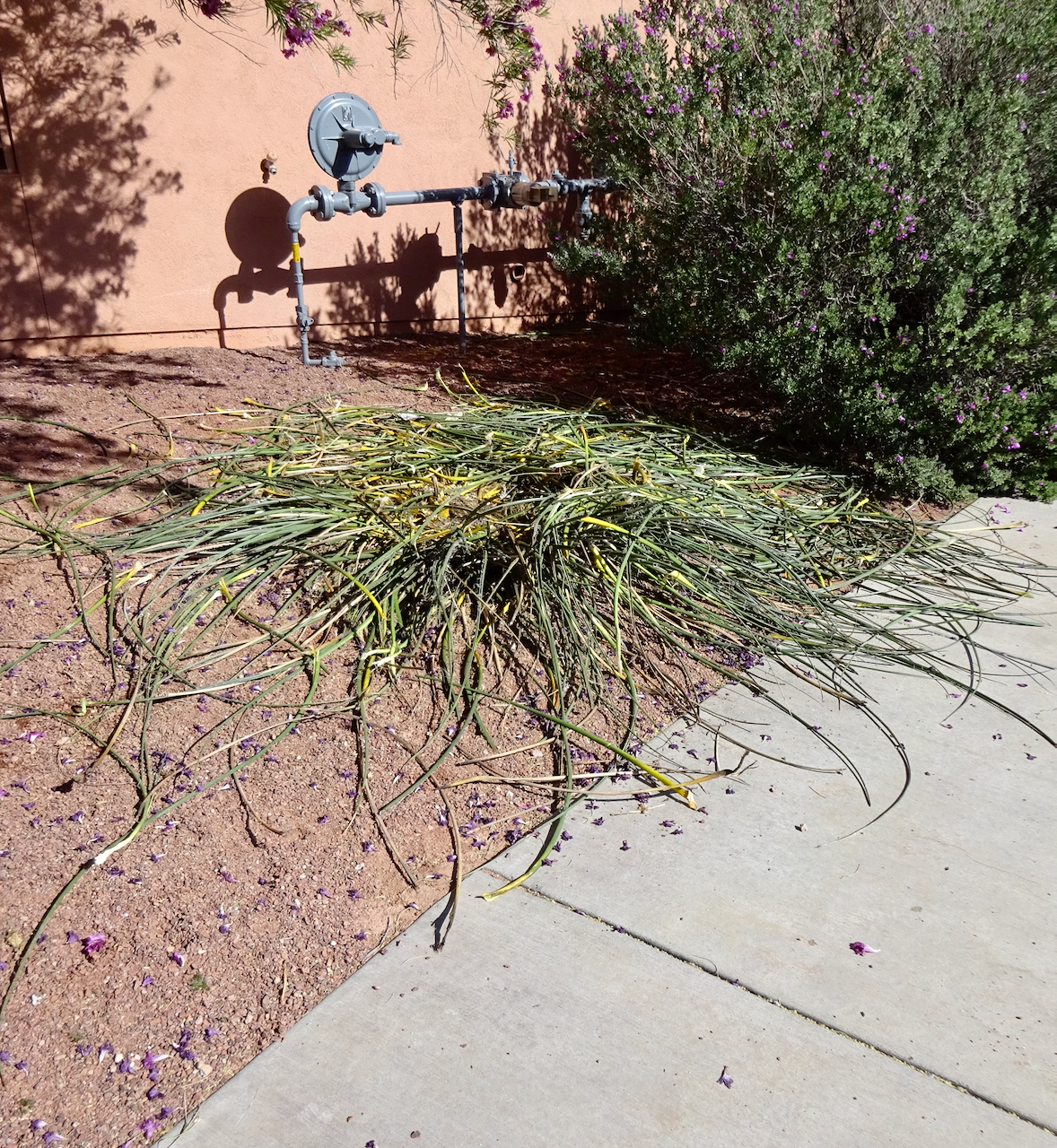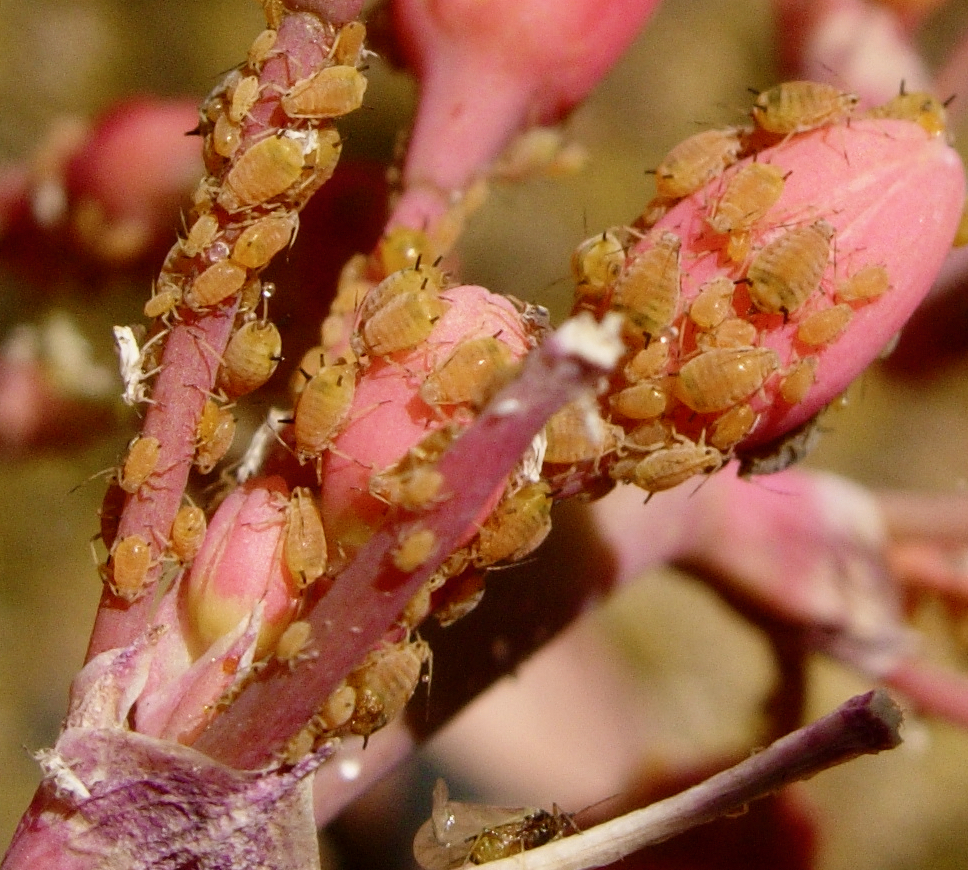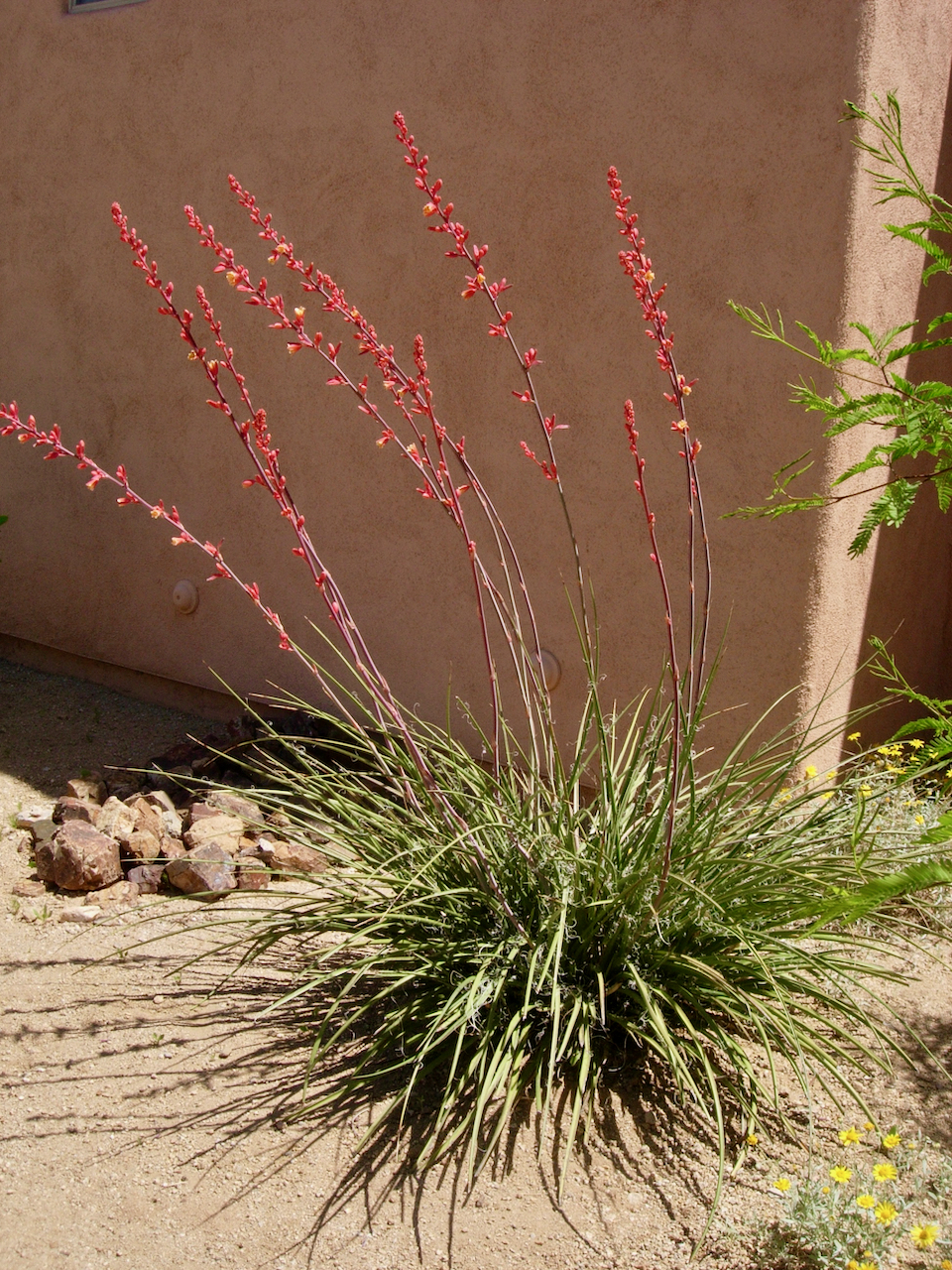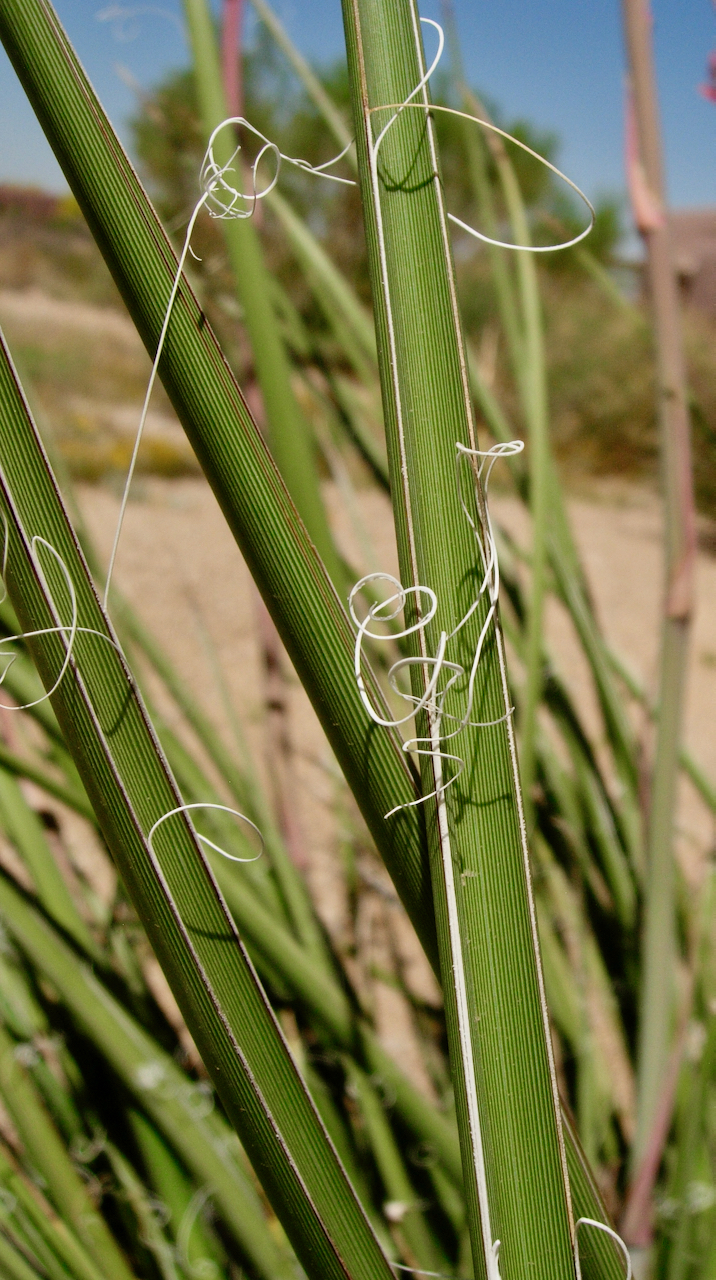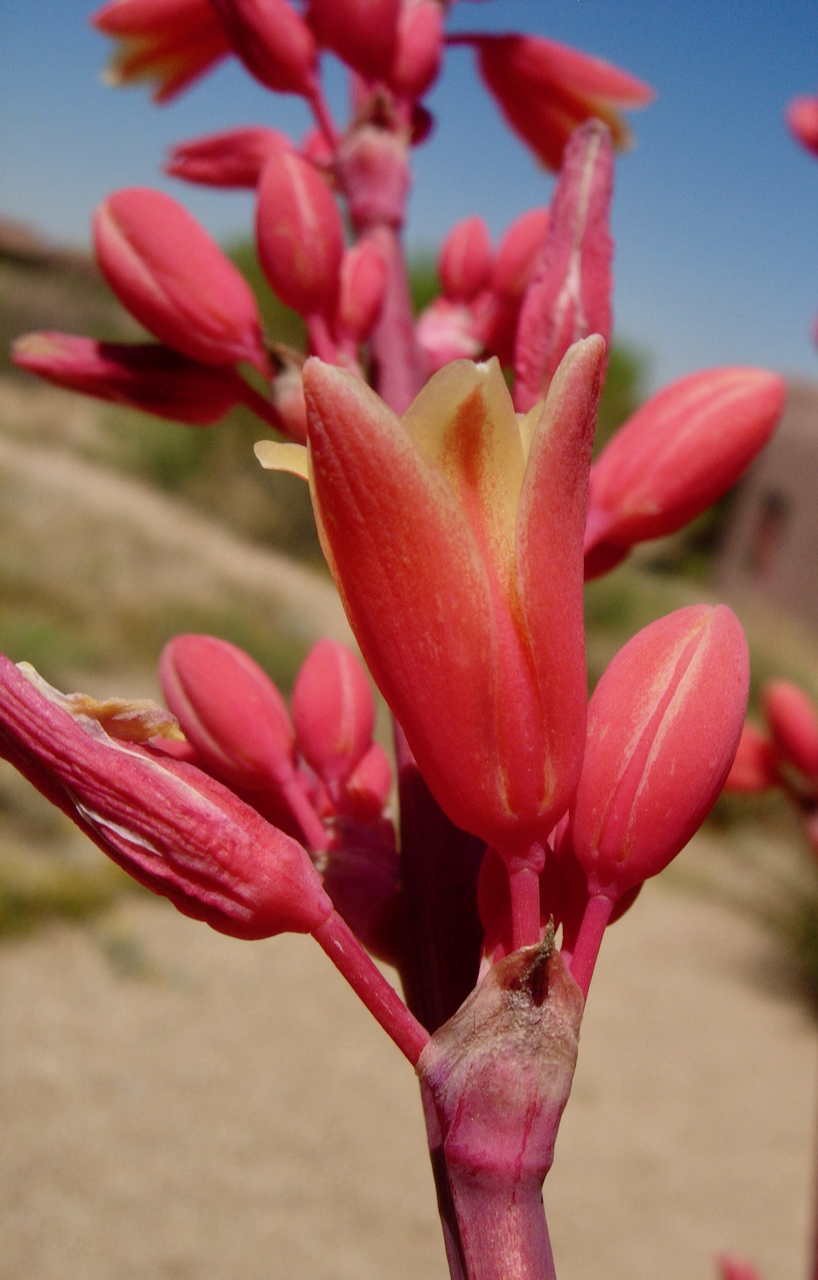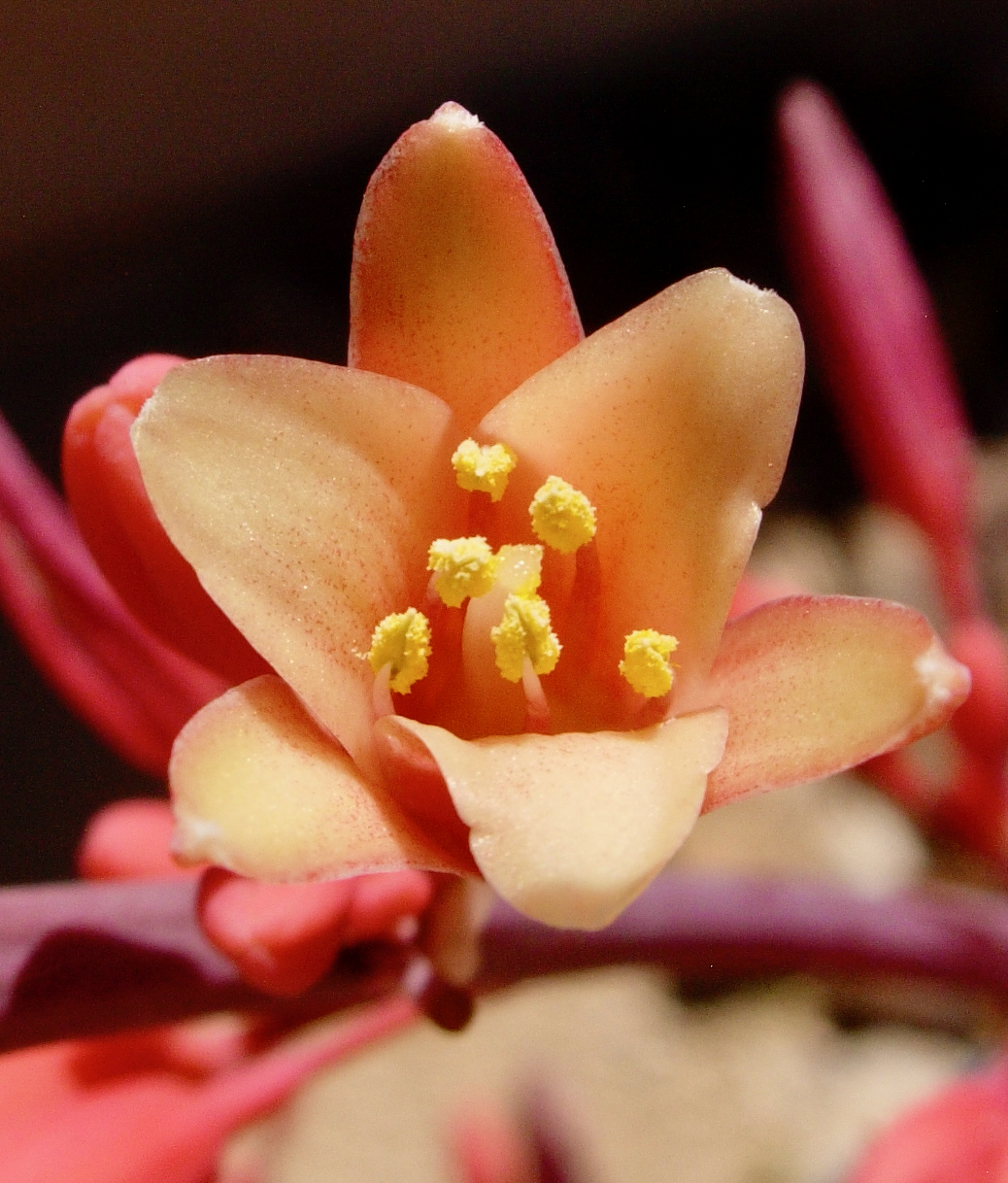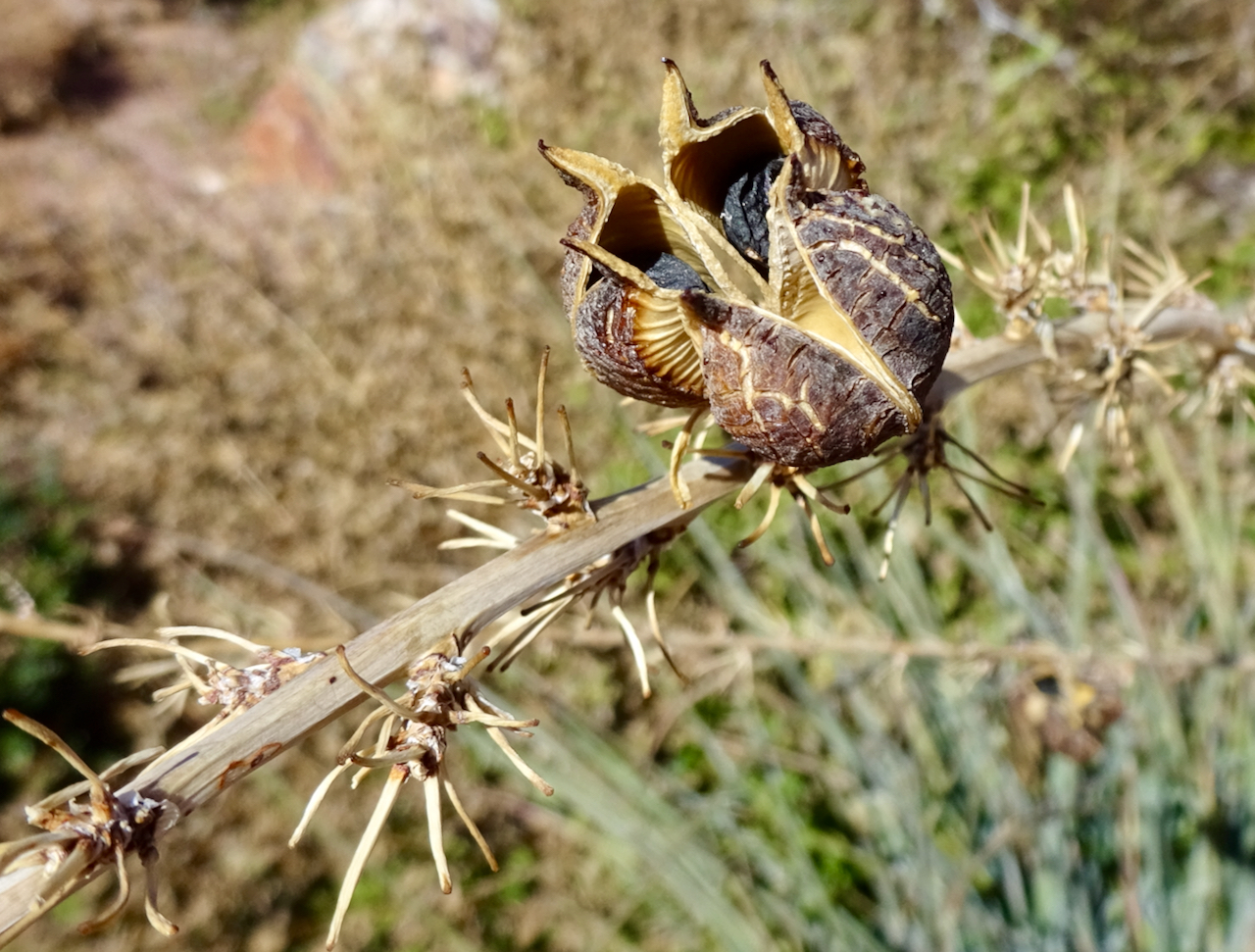Red Yucca
Hesperaloe parviflora
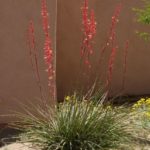
About the Plant
Red yucca, a native of Texas and adjacent Mexico, is a popular landscape plant in the Southwest. Its stiff, evergreen leaves add architectural interest year-round. In late spring, tall stalks reaching up to 10 feet produce showy red flowers that can continue until fall. Yellow-flowered selections are available.
Grow red yucca in full sun. It needs little care from you other than to remove the flower stalks when flowering ends. The leaves should never be trimmed except to remove any that are brown and dead. Supplemental irrigation increases the size of the plant. A few deep irrigations in the hottest, driest portion of the summer may improve appearance.
WARNING: Red yuccas, even large, well-established plants, are frequent targets of javelinas (see photo below). Grow this plant where it is protected by a wall or fence. A large, sturdy circle of chicken wire may offer some protection.
Notes:
- The flowers of red yucca may attract aphids (photo below). Remove these insects with a strong stream of water.
- Rabbits and deer may eat young plants.
- Red yucca is not a "true yucca"; that is, it is not in the genus Yucca. The rounded form of the plant, together with the long, slender leaves, may have given rise to the common name.
Wildlife value: Red yucca attracts hummingbirds. In its native habitat, it is pollinated by hummingbirds, bees, bats, and hawk moths.
More Information
Horticultural information from ASU
Map of distribution in US (yellow indicates plant is rare)
In books:
Native Plants for Southwestern Landscapes by Judy Mielke, page 162
Agaves, Yuccas, and Related Plants by Mary and Gary Irish, page 212
